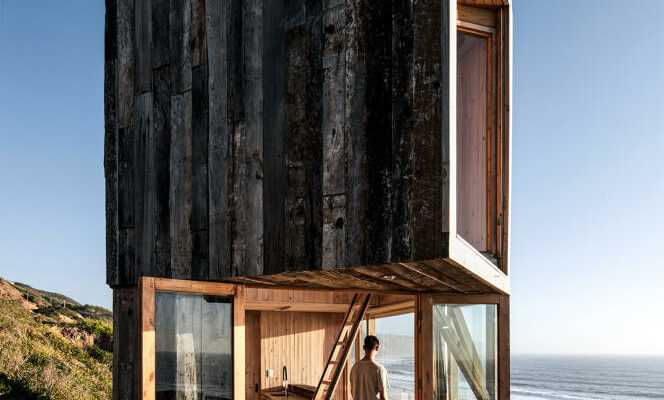The fantasy of a life away from the torments of the world makes accommodations “off the grid” (off the grid, in English) increasingly popular destinations. Nothing to do with any forced digital detox. It is a question, at the time of the consciousness of the exhaustion of resources, of living, the time of a weekend or a week, with the minimum of modern comfort.
Several books document this phenomenon, A house in the trees. Live in the heart of nature(La Martinière) or cabin fever (Gestalten, 2021, untranslated). In these refuges in the middle of nature, electricity – when there is any – is produced by solar panels and is used only for lighting and to heat water. We get it from nature reserves – wells, streams, reservoirs, springs… When it’s cold, we make the wood stove roar.
In France, the burons, these small stone houses built on the Auvergne pastures and the Aubrac plateaus, are open to fans of independent living. That of La Chambe, located at 1,300 meters above sea level, offers a spectacular view of the mountain range facing Puy Mary. We live there by candlelight and we sleep there under a sheepskin.
Across Europe, 62 farms host Un lit au pré lodges for a pleasant off-grid experience in all seasons. Set on a rock in the heart of the Helsinki archipelago, Majamaja is a 23 square meter stand-alone cabin made of local spruce. Pekka Littow, the Finnish architect behind this project, aims to replicate it in other regions of the world, always with local species.
In the United States, this wilderness who loves Americans experiments in particular in the mountains of Vermont, by renting the cabin in the trees of Laura Oliver, accessible only on foot.
burondelachambe.com ; unlitaupre.fr ; majamaja.com ; Vermont Cabin: airbnb.fr/rooms/14093180
